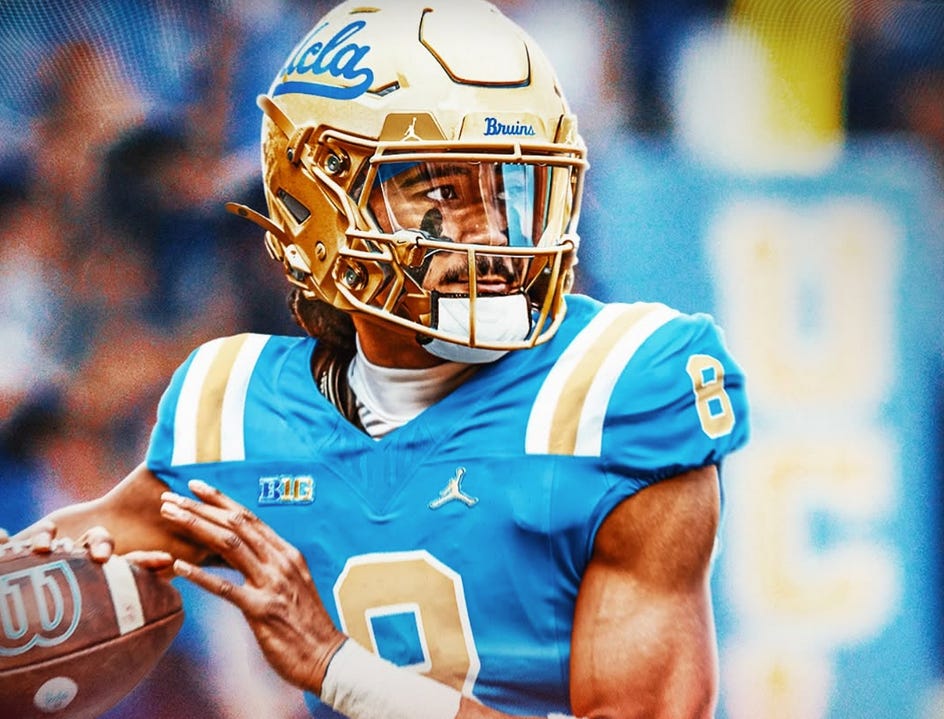
There are several realities that people ignore when broadly judging the NIL industry as a whole. Here are some:
Ignoring Personal Accountability
While everyone makes the claim that money is ruining college athletics because of NIL now being permissible, that viewpoint is ignorant and far too basic. Just because a school offers you a ton of money to go there doesn’t mean that’s where an athlete necessarily needs to go.
Nowadays, you may see cringe-worthy people making questionable decisions by being content creators or OnlyFans ambassadors. If I wanted to pursue the path of Bob Menery—where I use profanity and gain a reputation for being funny, but crass—I could do that. The trade-off is laughs and money in exchange for notoriety, celebrity, and reduced industry-wide respect. With athletes, the trade-off could be money and comfort in exchange for development, program fit or just a larger bank account.
College athlete recruitment has always required personal accountability for making a decision based on a variety of circumstances. If your official visit to a school looks like that of Jesus Shuttlesworth in the movie He Got Game, then it’s possible you may end up going to the school for the wrong reasons.
To be clear, money is not ruining the game—the people deciding to take the money, or the entourage surrounding a player and encouraging them to take the money, are “ruining the player.” Furthermore, NIL might be revealing some inconvenient truths about the relative lack of coaching ability possessed by some coaches who lean too heavily on money, stature, etc., in the recruiting process. When a good coach has adequate resources and a relatively level playing field, someone like Todd Golden wins a national championship with Florida Men’s basketball. When an amoral coach with an uneven playing field has an unfair advantage, a coach like Rick Pitino wins the natty.
In-Kind Trade NIL
The most classic form of NIL is in-kind trade, meaning that the athlete can give an endorsement or autograph in exchange for free goods or services. Ohio State football players commonly did this about two decades ago, and it cost Jim Tressel his job. The players traded items or autographs for tattoos or other benefits. Harmless and a fair market value trade, the NCAA intervened to the detriment of all parties. But rules are rules—even if they are absurdly wrong—so punishments followed. But in-kind trade is helping athletes, popular and not, to be enriched, even if just a little bit.
Free tanning, free sandwiches, free protein powder, free yoga classes, free smoothies, and more can all be received in exchange for a social media post, a picture, an autograph—or whatever the business and the athlete agree on. Many of the deals aren’t lopsided and actually benefit both parties marginally, with little to no downside.
The Complicity of the NCAA
The NCAA could easily and quickly enforce any number of rules to structure the NIL industry. Something as simple as being a certified advisor, or registering with the NCAA, or opting into a preferred banking partner or financial literacy solution could create very real benefits for an entity facilitating over $1 billion in yearly NIL payments.
But the NCAA is intentionally letting NIL appear massively unregulated and out of hand. The more lawless the situation looks, the more justified the involvement of politicians becomes—which hopefully (for the NCAA) leads to an antitrust exemption allowing the NCAA to continue to operate business as usual.
The NCAA has gone to great lengths to restrict opportunities for athletes. They are an enforcement organization masquerading as a management organization. You don’t need to look hard to find the double standards and disparities in treatment between men’s sports and women’s sports—especially between the sports that print revenue for the NCAA and the ones that don’t.
The NCAA has recently gone to great lengths to modify roster limits for every single NCAA sport. They have determined dollar values for the payment of former college athletes from most of the past decade. The NCAA has even (finally) taken a public stance on the permissibility of transgender athletes participating in sports against people of different gender assigned at birth. There has been adequate—maybe even impressive—progress made by the NCAA on many issues in the past 18 months.
I’m not absolving them of responsibility for the state of affairs, as they might wish. Instead, I’m heaping a bulk of the blame on the NCAA for the state of current affairs.
Many folks are quick to paint athletes, coaches, or NIL with a broad brush, but the reality is that each NIL contract and each NIL situation is unique unto itself. Friendly reminder: the NIL era is less than four years old, so there will continue to be maturation as years go by and improvements are made. I’ve been in NIL since day one, and I have seen the immense progress that has been made in such a relatively short period of time.
And there’s more progress to come!



